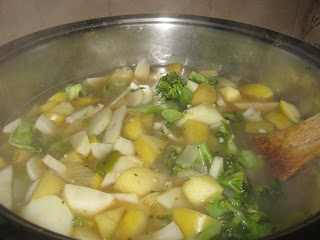 |
| The name Aloe is derived from the Greek alos which refers to the bitter juice obtained from the leaves. The Latin word Arborescens means tree like or tree forming. The common name Krantz refers to the habitat, a krantz being a rocky cliff or ridge. |
 |
How beautiful are these Aloe Arborescens flower spikes as they open and mature?
|
 |
The flowers produce nectar that attracts many kinds of birds and bees as well.
|
Back into the herb garden now!
 |
Mint, the best ground cover ever....I just love the tender and fresh new leaves.
|
 |
This beautiful White Lavender puts on quite a show....not found that frequently though.
|
 |
Sparkling early morning dew drops on the White Iceberg Rose, an absolute delight in the garden.
|
 |
Bright green, fresh and tender Tomato seedlings all cultivated from the compost!
|
 |
| Graceful and majestic, the Perennial Basil is another delight in the garden. The Indians used this sacred basil in rituals and ceremonies for protection. |
 |
| And yes, the bees love this basil as well. |
Later on we will pop back into the kitchen for some more winter warming delights.

















































